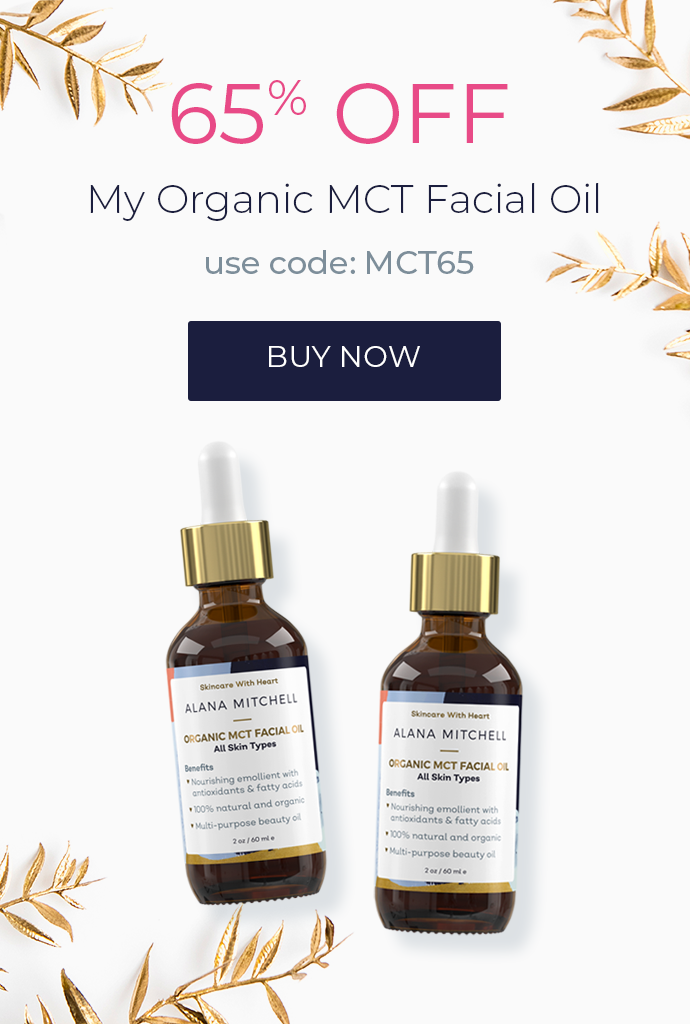What Should You Be Using In Your Skin Care Routine?
Take my quiz and get personalized recommendations from a
licensed esthetician!
What’s the Deal with Melasma? Everything You Need to Know About This Pesky Skin Condition
With personal experience as an expectant mother, it’s safe to say that the journey of pregnancy has its ups and downs.
In fact, I’ve gone through the roller coaster twice!
While pregnancy is a beautiful and memorable experience, it also brings along some not-so-pretty side effects.
For many women, this can include certain skin changes.

While it’s easier to identify certain issues (such as stubborn pregnancy acne), others can be a little trickier to figure out.
If you’re noticing some seriously suspicious gray-brown patches on your face, there’s no need to panic.
I’m here to tackle everything you need to know about this pesky skin condition - which is officially called melasma.
In this article, we’ll cover what exactly melasma is — and how to know when you have it.
After diving into a few causes of this skin condition, we’ll talk about how to treat it and prevent it from coming back!
So are you ready to start tackling melasma once and for all?
Let’s do this!

What Is Melasma?
Melasma (pronounced muh-LAZ-muh) is a common skin problem, causing brown to gray-brown patches.
These spots typically show up on the face - with most people experiencing it on the bridge of their nose, forehead, chin, cheeks, and above their upper lip.
It also can appear on other body parts that get a good amount of skin exposure, such as the forearms and neck.
There are four types of pigmentation patterns diagnosed in relation to melasma.

Women are far more likely than men to get melasma, and the condition is most likely to occur during the ages of 20-50.
People with olive or darker-toned skin, such as Hispanic, Asian, and Middle Eastern individuals, also have higher incidences of melasma as reported by the National Institutes of Health.
The skin condition is particularly common in expectant mothers because hormones serve as a major trigger.
The issue is so common in pregnant women that it’s even been nicknamed "the mask of pregnancy." (Sounds spooky, huh?)

Yes, that's me!
Surprise: I personally struggle with melasma.
See the patches of darker pigmentation underneath my eyes?
I can thank the cute 'lil guy next to me for that!
More details about my melasma to come...keep on reading!
Where Does Melasma Come From?
While the exact cause of melasma is unknown, experts link the dark patches in melasma to several potential factors.
These causes include:
- pregnancy
- birth control pills
- hormone replacement therapy (HRT and progesterone)
- a family history of melasma
- race
- anti-seizure medications
Sunlight is often considered to be the most important determinant in the production of melasma — which is just another reason to always wear sunscreen!
Studies show that individuals typically develop melasma in the summer months when the sun is at its highest intensity level.

How Do I Treat Melasma?
As with many skin conditions, treatment can start with prevention.
Adequate sun protection is your best bet.
I've said it a million times and I'll say it again - wear your sunscreen daily!
Sorry, dedicated sun tanners - as always, your skin’s health comes first!
Besides, there are plenty of sunless tanner options to give you that glow you desire without harmful UV rays!
When looking for the perfect sunscreen, search the container’s label for zinc oxide and titanium dioxide.
These serve as physical blockers to help intercept those UV rays.
Dermatologists also recommend wearing a wide-brimmed hat when chillin’ outdoors for even more protection.
Along with careful sun protection, melasma is also frequently treated with topical creams containing 2% of hydroquinone - infamous for its ability to lighten the skin.
However, many of my clients prefer to steer clear of this controversial ingredient (it's even banned in Europe).
Luckily, there are plenty of natural alternatives available!
These targeted formulas are available in serums, moisturizers, or facial oils.
For example, kojic acid is a natural skin lightener that reduces skin pigmentation - without the risky side effects of hydroquinone.
Alpha hydroxy acids (AHAs) are also a great option for melasma as they even out skin tone.
Glycolic acid, lactic acid, and mandelic acid are a few of my personal faves.
And, vitamin C has proven time and time again that it's a gold-standard ingredient for treating dark spots.
You can also go the non-hydroquinone route by trying tretinoin cream.
This cream contains a Vitamin A analogue (a retinoid) that can help treat melasma.

Let’s Get Personal!
This article wouldn’t be complete without a personal touch.
I want to share my own experience with melasma during and after pregnancy.
I had melasma while pregnant with my first son, and it appeared on my upper lip.
Super flattering, right?
The condition eventually went away on its own, about a year after he was born.
I wasn't bothered by it too much and it wasn't a major disruption to my beauty routine.
I simply used concealer to disguise the patches on particularly “bad days,” and didn’t feel the need to use any serums outside of that.
While carrying my second child, the melasma once again reared its ugly head.
However, this time was a little bit different.
It’s been three years since I gave birth to my second son, and I still have melasma around my eyes.

I took those pictures of myself last night, and luckily, my melasma isn't too bad right now!
The weather has been generally pretty cool and overcast, which helps.
The melasma definitely gets more noticeable in the summer months, thanks to the sun and heat.
Therefore, when I’m outside, I always make sure to wear a hat and reapply sunscreen through the day.
I hate how it makes me look tired all the time, as it particularly accentuates bags under my eyes.
In order to help reduce the pigmentation, I frequently rotate my skincare products.
I’m also considering a Kim Kardashian-approved "vampire facial" procedure, as reports have linked it to a decrease in melasma and enhanced collagen levels.
Essentially, the body has been tricked into thinking that an injury has occurred, so it brings growth factors to aid new collagen formation.
In the meantime, I've been using some great products to attack the issue!
Alana Mitchell Daily Vitamin C Moisturizer
Vitamin C is known for boosting collagen - which is why this product works wonderfully to address those melasma-induced face freakouts.
I formulated my product with 20% vitamin C for some serious rejuvenating superpowers!
It's also anti-inflammatory and soothing, making it great for even the most sensitive skin types.
And did I mention I love the scent?  Eminence Organics Bright Skin Moisturizer
Eminence Organics Bright Skin Moisturizer
This moisturizer works its magic by helping to even out skin pigmentation while lightening - or even completely removing - dark spots.
The natural complex boosts the skin's production of collagen and reduces melanin production.
As a result, I'm left with a brighter, softer complexion.
And it provides UV protection - like I mentioned above, that's so important when dealing with melasma!
AM Night R1 Retinol Facial Oil
This is another product from my personal line and I absolutely love it!
I use this facial oil overnight and always see an improvement in my skin the next day.
With a mix of jojoba, rosehip seed, avocado, and coconut oil, it not only smells great - but also helps moisturize and target aging spots.
A word of caution: Please don't use this product while pregnant or breastfeeding as it contains retinol.
 Cosmedica High Active Vitamin C Booster
Cosmedica High Active Vitamin C Booster
As you can tell, I’m all about my Vitamin C!
Containing higher pH levels than typical vitamin C products, this serum serves as a powerful way to penetrate deeply into the skin.
More fighting power = fewer skin problems!
Like other products I've mentioned above, it strengthens the stimulation of collagen synthesis, which is essential to repairing melasma.
Epicuren Zinc Oxide Perfecting Sunscreen
Now that we know the importance of SPF in treating melasma, it’s time to identify one of the best products to get the job done.
This sunscreen is packed with natural ingredients that protect skin from UV-related damage - and specifically treats hyperpigmentation and premature aging.
Since it includes zinc oxide, a natural UV filter that shields the skin from UVA and UVB rays, this gentle sunscreen helps protect and hydrate while also reducing the appearance of dark spots and evening your skin tone.
Plus, the formula is chemical-free, paraben-free, and recommended for all skin types!

Are Creams and Serums My Only Options to Treat Melasma?
Nope!
Melasma can also be treated via chemical peel or microdermabrasion.
These are two options that I personally love!
Chemical peels are carefully tailored and selected by your dermatologist for your skin's unique needs.
Chemical peels essentially offer controlled “damage” to the skin on your face, neck, or hands.
This means that acids are applied to the skin for added exfoliation.
This helps to reveal new, brighter, and smoother skin.
Microdermabrasion is another great avenue.
While that may seem like a mouthful, the process is simpler than you might think.
The procedure involves the use of a machine equipped with a stream of fine crystals or a diamond tip.
Some systems also include a suctioning function that vacuums the skin, whisking away dead cells and impurities.
The process helps reduce the hyperpigmentation that melasma brings, in addition to targeting those pesky age spots.
Last but not least, the procedure helps stimulate blood flow and increase the delivery of nutrients to the skin cells.
This promotes improved cell production and skin elasticity.
With the procedure lasting anywhere from a few minutes to up to an hour, there’s minimal to no post-treatment recovery time needed.
However, it’s important to note that these treatments don’t always come cheap!
As these procedures are typically considered cosmetic, they may not be covered by medical insurance providers.

Can I Stop Melasma Before It Starts?
In most cases, melasma is difficult to prevent completely.
Remember that you can reduce your risk by avoiding facial sun exposure and wearing sunscreen.
If you have a history of melasma in the family, it’s also important to take extra precautions.
While it’s not always feasible to avoid the sun completely, protection will be your best bet!
Final Thoughts
If you're struggling with melasma (like me), I wanted to share my story with you so you know that you're definitely not alone!
While melasma can be treated with a variety of skincare products and procedures, it’s important to remember that everyone’s skin is different.
Plus, individual circumstances (such as pregnancy or certain types of birth control) can influence the condition and cause different reactions.
While certain procedures may have worked great for a friend, it may not have the same effect on you.
You saw how many different products I use!
The best plan of action is to experiment (safely) with different options and go from there.
Soon, you’ll learn what treatments your skin reacts best to - and which ones may be more harmful than helpful.
Have you had a personal experience with melasma? What solutions have worked for you in the past, or are particularly helpful at the moment? Share with us in the comments!
Top Brands
New Brands

Recent Posts

Are You Taking the Right Steps to Care for Your Skin?
Take the Quiz
Skincare Secrets!
10-step guide for healthy, beautiful skin after kids.
100% privacy. I will never spam you!
















